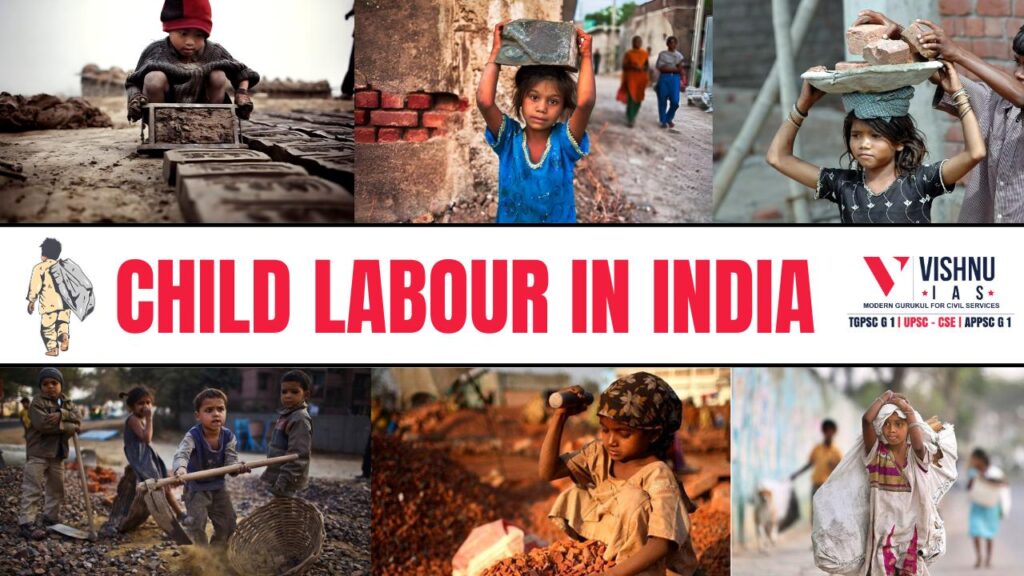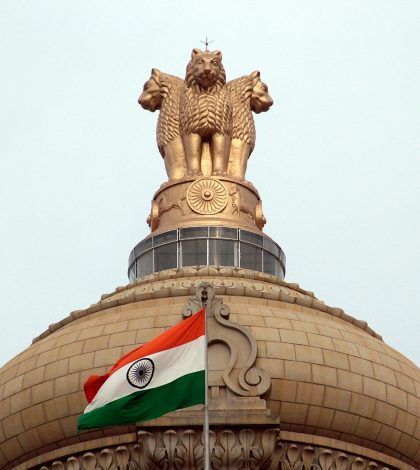CHILD LABOUR IN INDIA
According to International Labour Organization. The term “child labour” is often defined as work that deprives children of their childhood, their potential and their dignity, and that is harmful to physical and mental development. It refers to work that: is mentally, physically, socially or morally dangerous and harmful to children.
The constitution of India in the Fundamental Rights and Directive principles of state policy prohibits child labour below the age of 14 years.
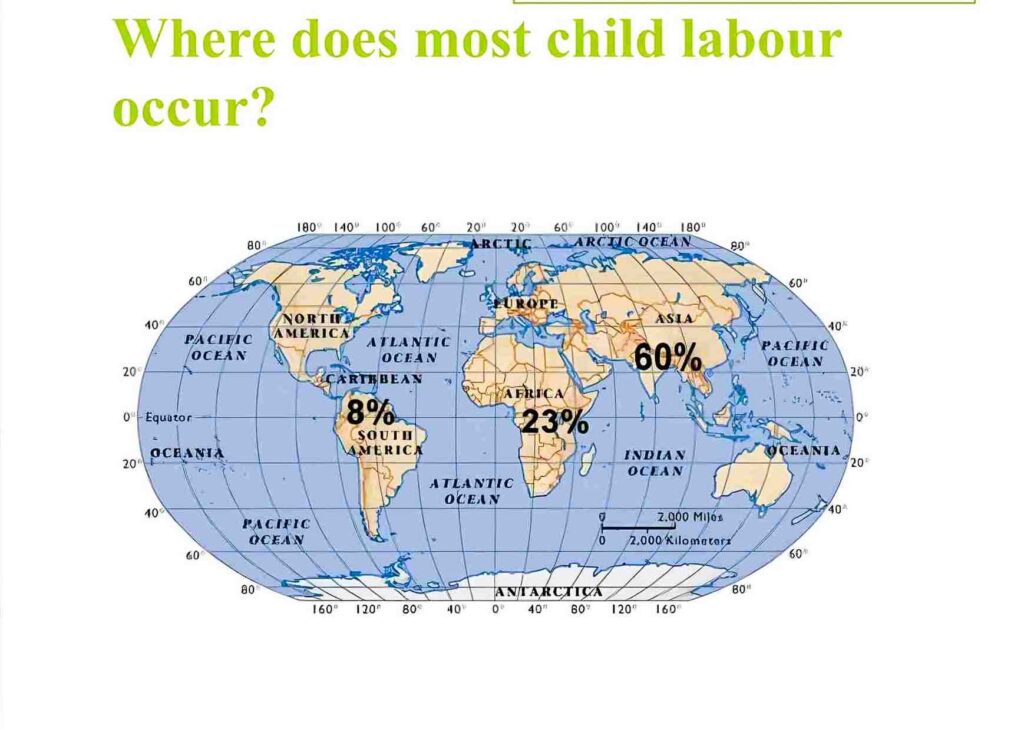
CAUSES OF CHILD LABOUR
- Poverty is the main cause.
- Orphans, destitute’s
- Employers find cheap labour in children
- Cultural factors like Caste system
- Poor education
- Lack of social security net
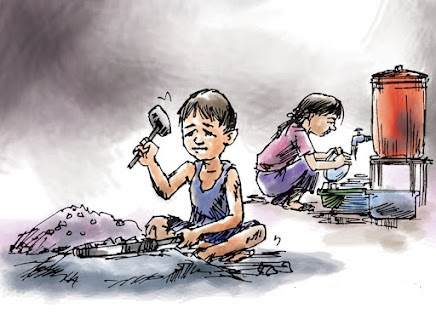
CONSEQUENCE OF CHILD LABOUR

- Children who work fail to get necessary education.
- They do not get opportunity to develop physically, intellectually, emotionally and psychologically.
- Skill development is difficult to achieve and as a result, the quality of human capital will be low.
- They fall under viscous cycle of poverty.
- They are treated badly and harassed physically and emotionally. This undermines their potential in return they turn as future criminals of the society.
How to address Child labour
- Constitutional
- Legislatively
- Executively
- Judicially
- Civil society bodies
- Empowered citizenry

CONSTITUTIONAL SAFEGUARDS
Fundamental Rights:

- Article 23: Prohibition of traffic in human beings and forced labour.
- Article 24: Prohibition of employment of children in factories, etc.
- Article 21-A: Free and compulsory education for children from 6-14years
- Directive Principle of State Policy:
- Article 45: Provision for free and compulsory education for children.
- Fundamental Duties:
- Article 51(A)(xi) Duty of all parents/guardians to send their children in the age group of 6-14 years to school
Child Labour (Prohibition and Regulation) Amendment Act, 2016
- It seeks to amend the Child Labour (Prohibition and Regulation) Act, 1986 to widen the scope of the law against child labour and stricter punishments.
- The Bill calls for complete ban employment of children below 14 in all occupations and enterprises, except those run by his or her own family.
- It defines children between 14 to 18 years as adolescents and bars their employment in any hazardous occupations.
- It makes child labour a cognizable offence attracting a jail term of up to two years and penalty up to fifty thousand rupees. The Bill has a provision of creating Rehabilitation Fund has also been made for the rehabilitation of children.
- Exceptions for Home business and Entertainment industry
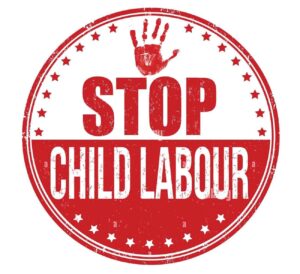
Executive Action
1. The National Policy on Child Labour of 1987
This policy was launched to combine the enforcement of laws with developmental programmes and address the root causes of child labour i.e. Caste and poverty. Under this policy, It focuses more on rehabilitation of children working in hazardous occupations and processes, rather than on prevention.
1. National Child Labour Project (NCLP) 1988
The 1987 policy had envisaged project based plan of action for areas of high concentration of child labour. Towards this, the government launched National Child Labour Project (NCLP) in 1988 in nine districts of high child labour prevalence. Under this scheme, special schools for child labour withdrawn from work were opened and children were provided education plus vocational training along with an stipend of Rs. 150 per month.
2. Integrated Child Development Scheme (Anganwadi services , Sabla , Child protection service & National creche scheme)
3. Mid Day Meal Scheme
4. Sarva Shikha Abhiyan
JUDICIAL ACTION
• In 1996, Supreme Court had ordered creation of Child Labour Rehabilitation Welfare Fund and mandated that every offending employer will deposit Rs. 20,000 mandatorily in this fund. Further, it also issued comprehensive directions to central and state governments to check child labour.
• In 2001, supreme court gave land mark judgementto implement mid day meal scheme across the country.

CIVIL SOCIETY ORGANISATIONS
• Several NGOs have been working towards ending child labour in India:
Bachpan Bachao Andolan It was launched in 1980 by Kailash Satyarthi. It is focuses on ending bonded labour, child labour and human trafficking, as well as demanding the right to education for all children. It had freed 80,000 child labourers and helped in reintegration ,rehabilitation and education.
GOI recently ratified the International Labour Organization's 2 conventions
1. ILO Convention 138 on Minimum age of employment
2. ILO Convention 182 on the worst form of child labour
A. No Child slavery(sale and trafficking of children, debt bondage and forced recruitment for armed conflict)
B. Child prostitution and their use in pornography
C. Use of children in illictactivities like drug trafficking
D. And exposure to any hazardous work which is likely to harm the health and safety of children.
3. The UN Convention on the Rights of the Child, 1989:It contains the idea that children are not just objects who belong to their parents and for whom decisions are made, or adults in training. Rather, they are human beings and individuals with their own rights.
4. Gurupadswamy Committee: In 1979, the central government formed the first statutory committee to analyze and research on the issue of child labour in India.
5. One of their major observations was that the problem of child labour is inextricably linked to poverty.
6. Taking into account the findings and recommendations of the committee, the Union Government enacted the Child labour (Prohibition and & Regulation) Act in 1986.
7. Initiatives like Operation Smile, Operation Muskaan to rescue and rehabilitation of childrens from an unorganised sector, manufacturing units and other factories.

